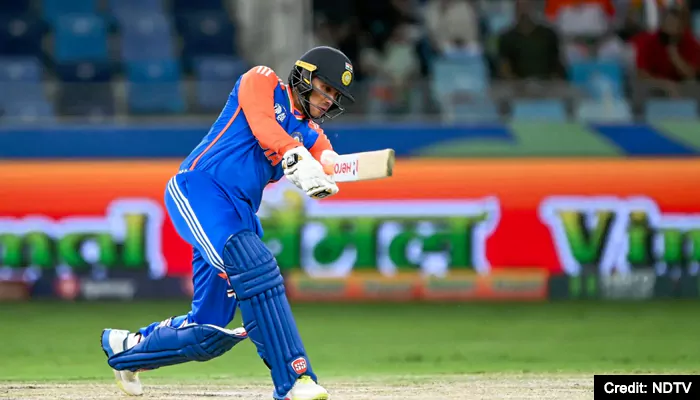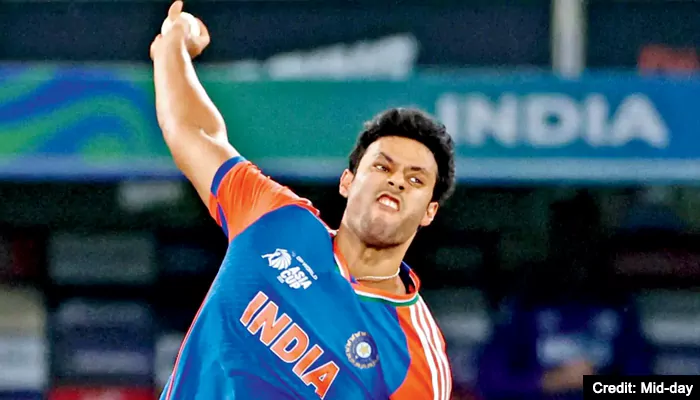From Abhishek Sharma's fireworks to Tilak Varma's composure, a look at the batters who carried India to their ninth Asia Cup crown
For all the drama that
unfolded after India's Asia Cup 2025 triumph-when the players refused to collect the trophy from ACC chief Mohsin Naqvi-the cricket itself had already provided plenty of spectacle. The final in Dubai had begun ominously, with India’s top order dismantled by Shaheen Afridi and Faheem Ashraf. However, Tilak Varma and Shivam Dube’s partnership changed the course of the game; earlier, Kuldeep Yadav's spin web sealed the collapse, and the Men in Blue secured their ninth Asia Cup title.

Credit: Olympics
Although India's bowlers shaped the outcome of the final, their batters had authored the story of the tournament over the fortnight. Here are the four Indian batters whose numbers defined the Asia Cup 2025.
Abhishek Sharma - India's new batting powerhouse
The breakout star of the Asia Cup, Abhishek Sharma, exploded to 314 runs in 7 innings, finishing as the tournament’s top run-scorer and Player of the Tournament. His average of 44.85, combined with an astonishing strike rate of 200.00, highlighted a player who did not just score runs but redefined momentum at the top.

Credit: Sportstar
He scored 3 half-centuries, including his best - 75 off 37 balls against Bangladesh, where he dismantled pace and spin alike. His 19 sixes were the most in the tournament, and his total of 32 fours demonstrated his range wasn’t solely about brute force. Every time India seemed in danger of stalling, it was Abhishek’s fearless starts that kept the scoreboard moving.
Tilak Varma - the calm in the storm
If Abhishek was fire, Tilak Varma was ice. The left-hander's impressive 213 runs at an average of 71.00 mostly came during tense moments. He truly saved his best for the biggest stage-the final-where his unbeaten 69 off 53 balls against PAK helped steady a challenging chase and turned the game into a historic win.

Credit: Telegraph
With a strike rate of 131.48, Tilak's 10 sixes showed his ability to adjust his pace when needed, but what truly shone was his maturity. He calmly handled the pressure of losing three early wickets in the final, built vital partnerships first with Sanju Samson and then with Shivam Dube, and happily left the field with the trophy in India’s hands.
Sanju Samson - a timely reminder
Sanju Samson's performance in the Asia Cup was modest in numbers-132 runs from 4 innings-but his crucial contribution kept India afloat when it mattered most. Against Oman in the group stages, Samson scored a patient 56 off 45 balls, ensuring India avoided embarrassment in what became their most scrappy win of the tournament.

Credit: NDTV
His overall strike rate of 124.52 was unusually low, and doubts remain about his ability to set the pace in the middle overs. Nonetheless, his 7 sixes and the composure of that solitary half-century demonstrated that, when given opportunities, Samson can still be relied upon as a safety valve.
Shubman Gill - the quiet anchor
Overshadowed by the explosive displays of Abhishek and Tilak, Shubman Gill's 127 runs at a strike rate of 151.19 may seem modest, but his role was to anchor rather than to dazzle. His best performance came in the Super Four clash against PAK, where his steady 47 frustrated the opposition and provided India with a platform to launch from.

Credit: ESPN
Gill's average of 21.16 might not make headlines, but his ability to hold one end allowed the free-flowing stroke-makers to flourish around him. His 17 fours across the tournament served as reminders of his classical stroke play, even on the slow UAE tracks that demanded patience.













